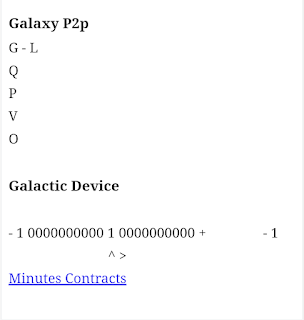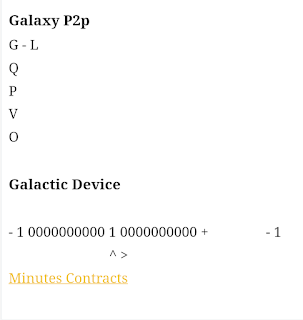The process of sound transmission from a speaker to quantum physics and back to a speaker involves several steps, primarily concerning how sound and electrical signals are converted, transmitted, and received.
Here's a simplified overview of the process:
1. Speaker to Electrical Signal
Audio Signal Generation : An audio signal, which is a variation in electrical voltage, is generated by a device (like a smartphone, computer, or amplifier). This signal represents sound waves as electrical impulses.
Signal Transmission : The electrical signal is transmitted through wires to the speaker.
Electrical Signal to Mechanical Motion
Voice Coil Interaction : Inside the speaker, the electrical signal flows through the voice coil, which is placed within the permanent magnet's magnetic field.
Electromagnetic Force :
The interaction between the magnetic field created by the permanent magnet and the magnetic field generated by the current in the voice coil produces a force (Lorentz force) that moves the voice coil back and forth.
Diaphragm Movement :
This motion of the voice coil is transferred to the diaphragm (cone), causing it to vibrate.
3. Mechanical Motion to Sound Waves
Sound Wave Production :
The vibrating diaphragm moves the surrounding air, creating pressure variations in the air that propagate as sound waves. These sound waves travel through the air and reach the listener's ears.
4. Sound Waves to Quantum Mechanics (At the Listener's End)
Sound Wave Detection : When the sound waves reach the listener’s ear, they cause the eardrum to vibrate.
Transduction to Electrical Signal :
The vibrations are converted into electrical signals by the auditory system (hair cells in the inner ear).
5. Quantum Mechanics (Underlying Physics)
Sound Wave Propagation :
Sound waves propagate through air as pressure variations, which can be described by classical wave theory.
Quantum mechanics generally doesn't play a direct role in everyday sound wave propagation but is fundamental to the underlying atomic and molecular interactions in materials that make up the speaker and the ear.
S × Q × S
Speaker
Quantum
Speaker
Electronics and Quantum Mechanics :
At the quantum level, the behavior of electrons in the speaker’s components, such as in the voice coil and electronic circuits, is governed by quantum mechanics.
Quantum effects influence how electronic components work but are not directly noticeable in the macroscopic behavior of sound.
6. Quantum to Speaker
Signal Conversion :
When the electrical signals are received by the speaker, the same process as described earlier happens in reverse.
The electrical signals are converted back into mechanical motion by the speaker’s voice coil, which moves the diaphragm to produce sound waves.
This cycle from electrical signal to mechanical vibration to sound wave and back is a continuous process in audio systems.
While quantum mechanics underpins the electronic and material properties involved, the macroscopic phenomena like sound propagation and speaker operation are better described using classical physics.
+-------------------------+
| |
| Audio Source |
| (e.g., smartphone) |
| |
+-----------+-------------+
|
| Audio Signal
|
+-----------v-------------+
| |
| Amplifier (if needed) |
| |
+-----------+-------------+
|
| Electrical Signal
|
+-----------v-------------+
| |
| Speaker |
| |
| +-------------------+ |
| | Voice Coil | | <--- Electrical signal flows here
| | Quantum Effects | | <--- Quantum mechanics at work in electron behavior
| +-------------------+ |
| | |
| | |
| +-------v-------+ |
| | Permanent | |
| | Magnet | |
| +---------------+ |
| | |
| | |
| +-------v-------+ |
| | Diaphragm | | <--- Voice coil movement causes diaphragm to vibrate
| +---------------+ |
| |
+-----------+-------------+
|
| Sound Waves
|
+-----------v-------------+
| |
| Listener's Ear |
| |
| +-------------------+ |
| | Eardrum | | <--- Sound waves cause eardrum to vibrate
| +-------------------+ |
| | |
| | |
| +-------v-------+ |
| | Auditory | |
| | Nerve | | <--- Vibrations converted to electrical signals
| +---------------+ |
| |
+-------------------------+
+-------------------------+
| |
| Audio Source |
| (e.g., smartphone) |
| |
+-----------+-------------+
|
| Audio Signal
|
+-----------v-------------+
| |
| Quantum-Enhanced |
| Amplifier |
| +-------------------+ |
| | Quantum Components| | <-- Quantum dots or materials for signal enhancement
| +-------------------+ |
+-----------+-------------+
|
| Electrical Signal
|
+-----------v-------------+
| |
| Quantum-Optimized |
| Speaker |
| |
| +-------------------+ |
| | Voice Coil | | <--- Enhanced with quantum materials
| | Quantum Effects | | <--- Quantum mechanics at work in electron behavior
| +-------------------+ |
| | |
| | |
| +-------v-------+ |
| | Permanent | |
| | Magnet | |
| +---------------+ |
| | |
| | |
| +-------v-------+ |
| | Diaphragm | | <--- Designed for optimal vibration response
| +---------------+ |
| |
+-----------+-------------+
|
| Sound Waves
|
+-----------v-------------+
| |
| Listener's Ear |
| |
| +-------------------+ |
| | Eardrum | | <--- Sound waves cause eardrum to vibrate
| +-------------------+ |
| | |
| | |
| +-------v-------+ |
| | Auditory | |
| | Nerve | | <--- Vibrations converted to electrical signals
| +---------------+ |
| |
+-------------------------+
Quantum Speaker Mechanics :
1. Quantum Effects in Voice Coil:
At the microscopic level, the behavior of electrons in the voice coil is influenced by quantum mechanics. Quantum effects impact how the electrical signal is carried and how the coil interacts with the magnetic field.
2. Quantum Effects in Electronic Components :
Components like transistors and semiconductors in the amplifier operate based on quantum mechanical principles, such as electron tunneling and energy band theory.
3. Materials and Interaction :
The properties of the materials used in the speaker and ear (e.g., how they vibrate and conduct electricity) are influenced by quantum mechanics, although these effects are not directly depicted in macroscopic schematics.
This schematic outlines how the quantum-level phenomena in electronic components interact with macroscopic processes to produce and perceive sound.









0 Comments